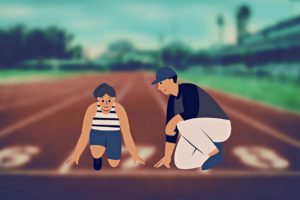Cultural sensitivity is an essential aspect of modern society, especially in a world where globalization has increased the interactions between people from different backgrounds. The ability to understand and appreciate different cultures is crucial for individuals, organizations, and communities to function effectively and harmoniously.
Cultural sensitivity is not only about tolerance but also about embracing diversity and inclusivity. In this article, we explore the role of sharing in teaching cultural sensitivity and how it can help individuals and societies embrace diversity.
Sharing is an essential tool in teaching cultural sensitivity because it allows individuals to connect with others, learn about their experiences, and understand their perspectives. Sharing can take many forms, from sharing stories and experiences to sharing traditions and customs.
Through sharing, people can break down stereotypes and dispel myths about different cultures. Additionally, sharing can help build bridges between cultures, fostering understanding and acceptance.
In the following sections, we will discuss practical ways to embrace diversity and promote cultural sensitivity through sharing.
Key Takeaways
- Cultural sensitivity is crucial in a globalized world, and promoting it can lead to increased productivity and job satisfaction.
- Sharing stories and experiences is an effective tool for teaching cultural sensitivity and promoting cross-cultural understanding.
- Practical ways to embrace diversity include participating in cultural events, trying different foods, learning a new language, and interacting with people from different cultural backgrounds.
- Acquiring cultural sensitivity is essential for creating a more interconnected global community, and it is also good for business and career opportunities.
The Importance of Cultural Sensitivity
The significance of cultural sensitivity is underscored by the need for individuals to recognize and respect the unique values, beliefs, and traditions of diverse cultural groups. This is particularly important in a globalized world where people from different cultural backgrounds interact on a daily basis.
Cultural awareness in education is crucial in teaching students to appreciate and respect diversity, as well as to promote tolerance and understanding. By learning about different cultures, students can develop a broader perspective and gain a deeper understanding of the world around them.
Cultural sensitivity in the workplace is equally important. Employers who are culturally sensitive are better able to create a diverse and inclusive work environment, which can lead to increased productivity and job satisfaction among employees. By recognizing and respecting cultural differences, employers can avoid misunderstandings and conflicts and build stronger relationships with their employees.
Moreover, organizations that promote cultural sensitivity are more likely to attract a diverse pool of talent, which can lead to increased creativity and innovation. Ultimately, promoting cultural sensitivity is not only the right thing to do, but it is also good for business.
The Role of Sharing in Teaching Cultural Sensitivity
One effective approach to promoting cross-cultural understanding involves the exchange of perspectives and experiences. Sharing stories and experiences is a powerful way to teach cultural sensitivity. When individuals share their experiences, they provide a glimpse into their culture, values, and beliefs. This enables others to gain a better understanding of the diverse world around them.
Additionally, sharing allows individuals to learn about different communication styles, beliefs, and customs that can facilitate cross-cultural communication. The power of storytelling cannot be understated when it comes to teaching cultural sensitivity. Stories offer a unique perspective on a culture and can illustrate the differences and similarities between cultures.
Thus, storytelling can serve as a powerful tool for fostering empathy, understanding, and respect. Cross cultural communication techniques such as active listening, open-mindedness, and non-judgmental attitudes can also enhance the effectiveness of sharing. By actively listening to others and being open-minded, individuals can learn to appreciate the diverse perspectives and experiences that exist in the world.
In conclusion, sharing is a powerful way to teach cultural sensitivity, promote cross-cultural understanding, and enhance communication skills.
Understanding and Appreciating Different Cultures
Understanding and appreciating different cultures involves gaining knowledge of the customs, beliefs, and values of diverse groups of people and developing an empathetic understanding of their unique way of life.
One way to achieve this is through cultural immersion, which involves engaging directly with people from different cultures and experiencing their way of life firsthand. Through cultural immersion, individuals can gain a deeper understanding of the cultural nuances and differences that exist between different groups of people.
Cross cultural communication is also an essential component of understanding and appreciating different cultures. This involves developing the skills needed to communicate effectively with people from diverse cultural backgrounds. It requires individuals to be aware of their own cultural biases and to be open to learning about the customs, beliefs, and values of others.
By developing these skills, individuals can build stronger relationships with people from different cultures and work towards creating a more inclusive and diverse society.
Overall, understanding and appreciating different cultures is essential for promoting cultural sensitivity and building a more inclusive community.
Breaking Down Stereotypes
Breaking down stereotypes requires a conscious effort to challenge preconceived notions and assumptions about different groups of people. These assumptions are often based on limited or incorrect information, which can lead to negative attitudes and behaviors towards individuals who do not fit into our preconceived ideas about them. Stereotyping can be harmful and can limit our ability to understand and appreciate the diversity of cultures and identities that exist in our world.
To challenge these assumptions, it is important to promote empathy and understanding of different perspectives. This can be achieved through the following steps:
Acknowledge the existence of stereotypes: Recognizing that stereotypes exist is the first step in breaking them down.
Educate yourself: Learn about different cultures and identities through books, movies, and conversations with people from those cultures.
Question assumptions: Challenge your own assumptions and those of others by asking questions and seeking out different perspectives.
Encourage diversity: Promote diversity in your personal and professional life by seeking out opportunities to interact with people from different cultures and backgrounds.
By actively challenging stereotypes and promoting empathy, we can create a more inclusive and understanding society.
Building Bridges Between Cultures
Fostering cross-cultural communication and collaboration is essential for creating a more interconnected global community. One way to achieve this is through cultural exchange programs that provide opportunities for individuals from different cultures to interact and learn from each other. These programs can take many forms, including study abroad programs, language exchange programs, and cultural immersion programs.
Through these programs, individuals can gain a deeper understanding and appreciation of different cultures, which can help to break down barriers and promote mutual understanding.
Cross-cultural communication is also essential for building bridges between cultures. This involves not only understanding and respecting different cultures but also actively seeking to engage with them. This can be done through initiatives such as community events, cultural festivals, and intercultural dialogue.
By engaging with different cultures, individuals can gain a better understanding of their perspectives, values, and beliefs, which can help to promote empathy and understanding. Ultimately, building bridges between cultures is essential for creating a more inclusive and diverse global community that celebrates and embraces cultural differences.
Creating a More Inclusive Society
Promoting inclusivity is imperative for creating a society that values and respects all individuals, regardless of their background or identity. It is important to acknowledge and celebrate differences in race, ethnicity, religion, gender, sexual orientation, and other aspects of identity. By doing so, we can create a more welcoming and diverse society that promotes empathy and understanding.
To create a more inclusive society, we must actively work to promote empathy and understanding. This can be achieved through various means, such as creating opportunities for people to interact with those from different backgrounds, educating individuals on the experiences and struggles of marginalized communities, and actively challenging discriminatory attitudes and behaviors.
Celebrating differences through cultural events, festivals, and other activities can also help to foster a sense of inclusivity and belonging. By valuing and celebrating diversity, we can create a society that is more accepting and supportive of all individuals.
Practical Ways to Embrace Diversity
This discussion will focus on practical ways to embrace diversity, specifically through participating in cultural events, trying different foods, and learning a new language.
These three activities provide opportunities for individuals to become more familiar with and appreciate cultures different from their own.
Participating in cultural events allows individuals to immerse themselves in the traditions and customs of a particular culture, while trying different foods can broaden one’s culinary horizons and expose them to new flavors and ingredients.
Finally, learning a new language can enhance communication and understanding between individuals from different cultural backgrounds.
Participating in Cultural Events
Participation in cultural events allows individuals to gain a deeper understanding and appreciation for different cultural traditions and customs. Attending festivals and joining cultural clubs are two practical ways to immerse oneself in cultural events.
Festivals, such as Chinese New Year, Diwali, and Cinco de Mayo, provide an opportunity to witness cultural celebrations firsthand. By attending these festivals, individuals can learn about the history and significance of the event, taste traditional foods, witness traditional dances, and hear traditional music.
Joining cultural clubs is another way to participate in cultural events. These clubs provide a platform for individuals to interact with people from different cultural backgrounds and learn about their customs and traditions. Through cultural club meetings and events, individuals can participate in activities such as cooking traditional foods, learning traditional dances, and celebrating cultural holidays.
By participating in these events, individuals can gain a deeper understanding and respect for different cultures, which can lead to a more inclusive and accepting society.
Trying Different Foods
Exploring different cuisines can broaden one’s cultural horizons and provide a unique sensory experience. Trying different foods is a simple yet effective way to participate in cultural exchange. Food is an integral part of every culture, and by sampling various dishes, one can gain insight into the history, traditions, and values of that culture.
Furthermore, food exploration can lead to a greater appreciation and understanding of diverse communities and their customs. Food is not only a means of nourishment but also a way of expressing cultural identity. Through food, people can share their stories, beliefs, and experiences.
Trying different cuisines can also break down cultural barriers and foster connections between people from different backgrounds. In today’s global society, it is essential to embrace diversity and promote cultural sensitivity. Food exploration is a fun and accessible way to achieve this goal and promote cross-cultural understanding.
Learning a New Language
Acquiring a new language can enhance one’s communication skills and provide opportunities for cross-cultural interactions. Learning a new language through language immersion programs or language exchange programs can be an effective way to gain proficiency in a foreign language.
Here are some benefits of language immersion or exchange programs:
Improved language learning: Language immersion programs are designed to immerse the learner in a foreign language setting. This approach helps learners to pick up the language faster and in a more natural way. Language exchange programs, on the other hand, allow learners to practice speaking the language with native speakers, which helps to improve their pronunciation and fluency.
Enhanced cultural understanding: Learning a new language through immersion or exchange programs also provides an opportunity to gain a deeper understanding of the culture of the language being learned. This can help learners to appreciate and respect cultural differences, and increase their ability to communicate effectively with people from different cultural backgrounds.
Increased confidence: Language immersion and exchange programs provide learners with a safe and supportive environment to practice using a new language. This helps to build confidence in learners, which can be beneficial in their personal and professional lives.
Career opportunities: Proficiency in a foreign language can be an asset in the job market. Language immersion or exchange programs can help learners to gain the necessary language skills to pursue career opportunities in international business, diplomacy, and other fields that require cross-cultural communication.
Overall, learning a new language through immersion or exchange programs can be a valuable experience that enhances communication skills, cultural understanding, and career opportunities.
Frequently Asked Questions
How can cultural sensitivity and diversity be taught in non-classroom settings?
Cultural sensitivity and diversity can be taught in non-classroom settings through various means such as role playing scenarios and cross cultural immersion experiences.
Role playing scenarios can be utilized as a tool to simulate real life situations where individuals can learn how to interact with people from different cultural backgrounds. This approach can help individuals understand and appreciate the differences in cultural norms and values.
Cross cultural immersion experiences, on the other hand, involve actual exposure to different cultures. This approach can help individuals gain a deeper understanding of different cultures by experiencing them firsthand.
Both these approaches can be effective in teaching cultural sensitivity and diversity outside of the traditional classroom setting.
What are the potential challenges in teaching cultural sensitivity to individuals who are resistant or skeptical?
Dealing with resistance and addressing stereotypes are potential challenges in teaching cultural sensitivity to individuals who are resistant or skeptical. Resistance may stem from a lack of understanding or preconceived notions about other cultures.
Addressing stereotypes involves challenging and dispelling these preconceptions through education and exposure to diverse perspectives. Strategies for addressing resistance may include providing a safe and non-judgmental space for dialogue, incorporating cultural competency training into professional development opportunities, and utilizing diverse media representation to promote understanding and empathy.
Ultimately, it is important to acknowledge and address resistance in order to foster an inclusive and welcoming environment for all individuals.
How can educators ensure that their teaching methods are effective in promoting cultural sensitivity and understanding?
Incorporating empathy and role-playing exercises are two effective strategies that educators can use to promote cultural sensitivity and understanding in their teaching methods.
Empathy allows individuals to understand and share the feelings of others, which is important in developing a deeper understanding of diverse cultures.
Role-playing exercises allow individuals to step into the shoes of someone from a different cultural background and experience their perspective, which can lead to greater empathy and understanding.
By incorporating these techniques into their teaching methods, educators can create a more inclusive and diverse learning environment that fosters cultural sensitivity and understanding.
What are some common misconceptions about cultural sensitivity and diversity that need to be addressed in education?
In the pursuit of promoting cultural sensitivity and understanding, it is important to address common misconceptions about diversity that are prevalent in education.
One of the most significant misconceptions is the idea that cultural sensitivity can be achieved through memorizing facts and figures about different cultures. This approach overlooks the importance of cultural humility, which involves acknowledging one’s limitations and recognizing the diversity within each culture.
Another misconception is the belief that cultural sensitivity involves being politically correct and avoiding any discussion of controversial topics. In reality, promoting cultural sensitivity requires an open and honest dialogue that acknowledges the complexity of different cultures.
By addressing these misconceptions, educators can create a more inclusive and respectful learning environment that embraces diversity.
How can individuals continue to develop and maintain their cultural sensitivity and understanding beyond formal education settings?
Individuals can continue to develop and maintain their cultural sensitivity and understanding beyond formal education settings by engaging in cultural immersion experiences and practicing cross cultural communication.
Cultural immersion involves actively participating in cultural activities, events, and traditions, and learning about unfamiliar cultures through firsthand experiences. This can include attending cultural festivals or events, trying new foods, or visiting museums or cultural centers.
Additionally, practicing cross cultural communication involves actively listening to and learning from people from different cultural backgrounds, being mindful of cultural differences in communication styles and norms, and seeking to understand and respect diverse perspectives.
By actively engaging in cultural immersion experiences and practicing cross cultural communication, individuals can continue to develop their cultural competence and understanding outside of formal educational settings.
Conclusion
Cultural sensitivity plays a crucial role in creating a more inclusive society. Sharing experiences and understanding different cultures can break down stereotypes and build bridges between people of different backgrounds. It is important to appreciate and embrace diversity in all aspects of life, from the workplace to personal relationships.
One practical way to promote cultural sensitivity is through education and awareness. Schools and universities can offer courses or workshops on cultural diversity and encourage students to engage in activities that expose them to different cultures. Additionally, individuals can make an effort to learn about different cultures through books, documentaries, and conversations with people from diverse backgrounds.
In conclusion, embracing diversity is essential for creating a more accepting and tolerant society. By understanding and appreciating different cultures, we can break down barriers and build a more inclusive community. Through sharing experiences and promoting education on cultural sensitivity, we can work towards a more harmonious and equitable world.

















